Which Backpacking Stove?
Camp Kitchen
As hikers we gain experience and confidence the longer we hike and depending on our interests, we often move onto longer day hikes and may even transition to overnight and multi-day trips. It’s at this stage that several additional considerations come into play. One of these considerations that we are faced with is what do you do about food?
For most day hikes it is relatively easy to manage your food and even on short overnight hikes you can forgo hot meals and drinks and keep things simple. But what if you do want that hot chocolate or hot meal at the end of the day? How do you heat it up? Or if you are so inclined, how do you cook on the trail? Now as a typical ‘gear head’ I must admit to owning six stove systems with my stoves being mainly aimed at my multiday solo thru-hikes where I am trying to minimise weight.
When looking at purchasing a stove option you need to consider its use. Will you just be boiling water for a hot drink and for rehydrating your food or will you be cooking on the trail? On our typical multiday trips, we don’t tend to ‘cook’ and instead we usually drink two cups of tea/hot chocolate a day and boil up an average of 500ml of water for rehydrating a twin pack meal and a dessert every second day. For us this means we will be boiling approximately 1.5-1.8 litres of water on average each day.
When comparing these stove systems you will need to look at the size and weight of the system which includes the unit creating the heat, the fuel source and the cooking/heating container. I have bypassed cooking on open fires here as well as avoided homemade stoves and will instead concentrate on readily available commercial systems.
Gas Stoves
This cooking system involves a gas heating unit screwed into the top of a gas canister, which contains a butane/propane mixture.
A wide range of companies produce these units so you are spoiled for choice with most models selling for under $110 RRP AUD. The cheaper models use matches, cigarette lighters , or a fire steel to ignite with dearer models often containing a push button starter mechanism.
Like other stove units you will need to add the pot to the system to cook anything. While manufactures will usually recommend you use their brand of gas, the canisters are interchangeable between brands. These units tend to be very robust and will last for years.
We asked our community questions relating to hiking stove use in a survey and 30% of hikers identified they use this stove type for their hiking adventures however anecdotally this number is much larger from what I’ve seen on my hikes.
For the use I described in the introduction, I will need approximately 18 grams of gas per day for two people at a cost of approximately $1.58 for two people/day. There are a number of different cylinder sizes but from personal preference I use the small 100 gram unit. While it’s dearer to buy these small cylinders it’s easier to keep track of gas use. for most of the stoves on this range a 100gram canister will last just on size days. If using the small cylinders you will need a base support to stop them tipping over due to their small weight.
Pros
- Fuel is readily available worldwide in a range of sizes
- Relatively quick to boil
- Relatively cheap to run
- Quick to assemble and disassemble
- Adjustable heating temperature
Cons
- Hard to gauge how much gas is left in the cylinders
- The cheaper stoves don’t work well in wind without a windshield
Best Use
- Great for couples or solo hikers who want minimal weight and easy cooking
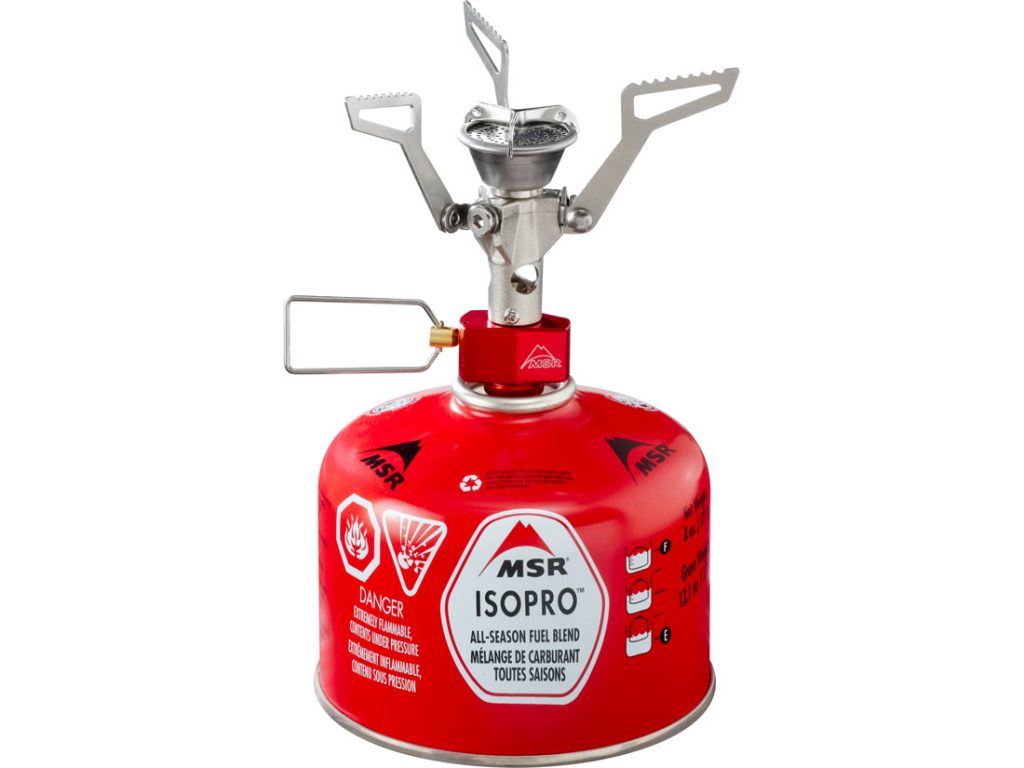
MSR Pocket Rocket 2 stove mounted on a gas cylinder
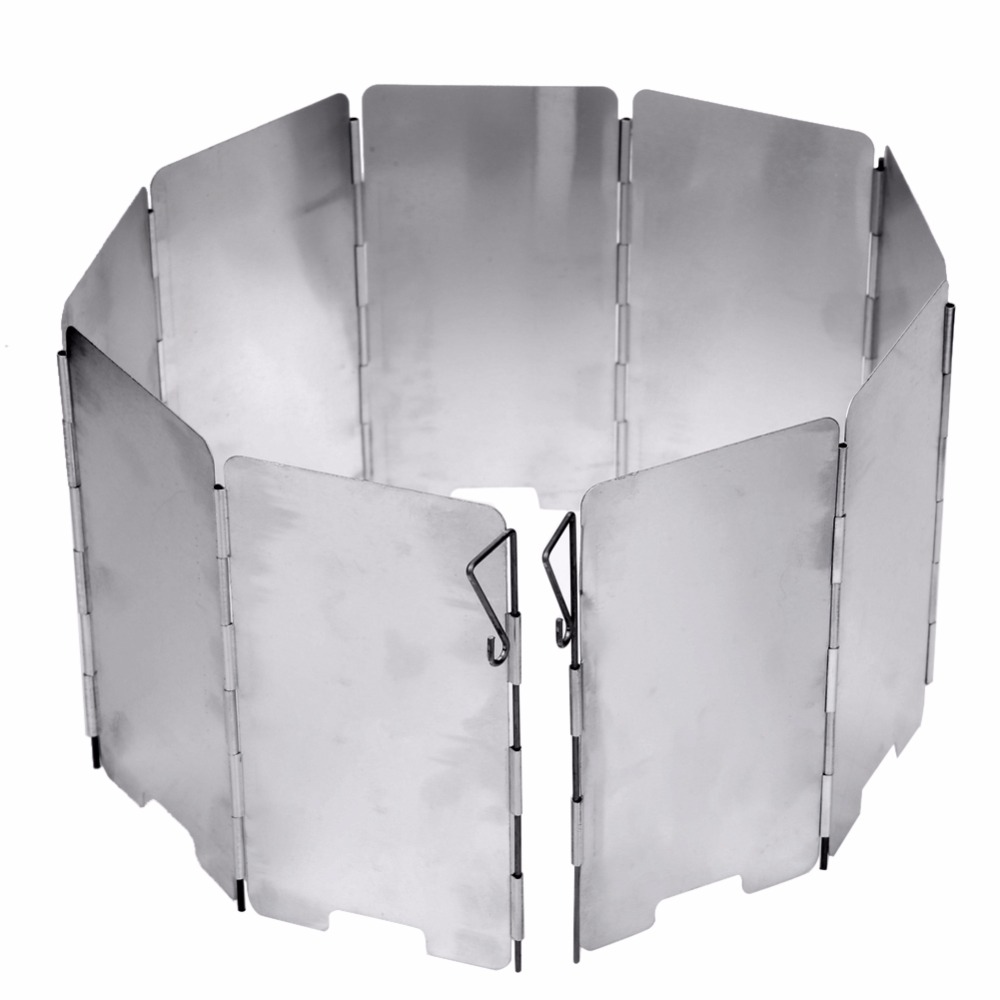
Windshield. This shield is put around the burner and pot to minimise the impact of wind on the stove
Integrated Gas Stoves
This type of stove is a gas stove that includes an integrated pot set, usually an electric starter mechanism and a wind barrier system all in one. This integrated system is easy to manage on the trail, great for those new to using stoves, and if looked after generally lasts.
The main claim to fame of these stoves is that they boil water; and they do this FAST. Boiling ½ litre of water takes under 2.5 minutes in most conditions. As ambient temperatures drop the fuel becomes colder causing a lower vapour pressure, and with it a lower burner output. Companies like Jetboil and MSR produce the best-known models.
For the use I described in the introduction for two people, my preferred 100 gram gas cylinder will last 7-8 days at $1.28/day/two people. A 100 gram cylinder will usually provide about one hour of burn time. Along with gas stoves this is the main style of stove currently used by most hikers and in our recent survey, 30% of hikers said they use this stove type for their hiking adventures.
Pros
- Fuel is readily available worldwide
- Wind resistant compared to other stove types
- Very fast and as such they use very little fuel
- Nothing more you need to buy
- The newer models have a built-in ignition units
- At $9.00 per 100gram canister this equates to $1.28 per day for my example
- Many models are designed for the 100 gram gas cylinder to fit inside the integrated pot
Cons
- Expensive up front purchase
- Not easy to do field repairs on
- Carry matches, cigarette lighter or fire steel, just in case its really cold or the ignition mechanism doesn’t work
- Not great for cooking meals unless you buy the accessories
- Heavy for a solo hiker but when shared between two, the weight is not a great issue
Best Use
- While there are accessories available for these units to be used for cooking they are usually meant for boiling water
- Great for shorter trips were weight is not an issue
- When you only need to boil water and want it done quickly
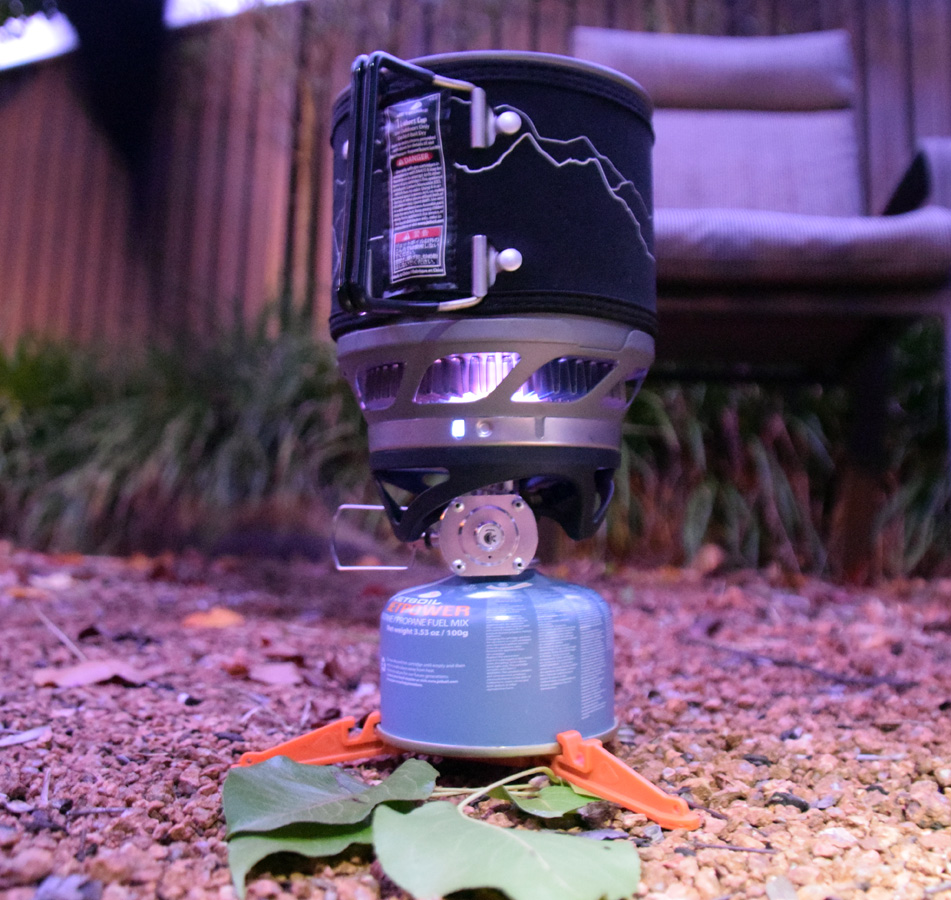
Jetboil Minimo Integrated Stove
Spirit Stoves
These stoves use methylated spirits in a small container under a stand allowing a pot to sit on top. This stove type is probably the most sold camping stove in Australia and if you own multiple stoves I can almost guarantee this will be one of them. Probably the best-known stoves in this category are the Trangia stoves, which use methylated spirits (Usually known as Denatured Alcohol in the USA).
These stoves can be used for cooking as well as boiling water for rehydration use with their main drawback being their speed. This slow speed is what makes then suitable for cooking but does mean you will use more fuel.
For simple overnight trips these are not the lightest options, as you will need to carry a robust container with your fuel. You can always use lightweight containers but make sure that they are secure as methylated sprits can severely damage much of your equipment if the bottle leaks. Trangia also produces a dedicated fuel bottle which while not lightweight, nor cheap is very secure. One of the biggest advantages is that you need to estimate how much fuel to use and if you run out mid-way through the cooking process you need to wait until the burner has cooled down to add more otherwise you risk injury.
By far the biggest disadvantage of this stove type is the risk of personal injury and/or causing fires with these units. I managed as an 11-year-old to set my hand on fire cooking with methylated spirits and thankfully caused no permanent damage. I have also seen the fuel spill causing fire on the surrounding ground, which is not something you want to do in times of high fire danger. As such, this is a stove for ‘adult’s only’ or older kids under strict supervision. In our recent survey 26% of hikers identified they use this stove type for their hiking adventures.
For the use I described in the introduction I will need approximately 40 ml of methylated spirits per day for two people at a exorbitant cost of 14¢.
The Trangia systems come complete with built in windshields, fuel burner and pots and in a range of sizes to cater for large or small groups.
Pros
- Fuel is readily available worldwide
- Very cheap
- Simple construction so there’s not much to go wrong
- Easily able to gauge fuel use
- The units come as kits so there is nothing more to add
- Mid-range as far as purchase prices go for cooking systems and this includes the pots. The kits also include ‘pot grips’ to handle the hot pots
Cons
- Knock one of these over and you run the risk of setting fire to the surrounding landscape. Always remove leaf litter from the cooking area and ensure that the stove is stable
- Can create sooting on the pot. However, Trangia recommends diluting the fuel with 10-15% water to resolve this issue
- Long cooking times even just to boil water
- During the daytime, it can be hard to see if the fuel is lit
- These stove types can’t be used in most Australian states/territories in times of total fire bans; Check before you go
- The fuel weight, while relatively small for each use adds up for longer trips
Best Use
- Great for couples or solo hikers who aren’t in a hurry or aren’t going ultralight
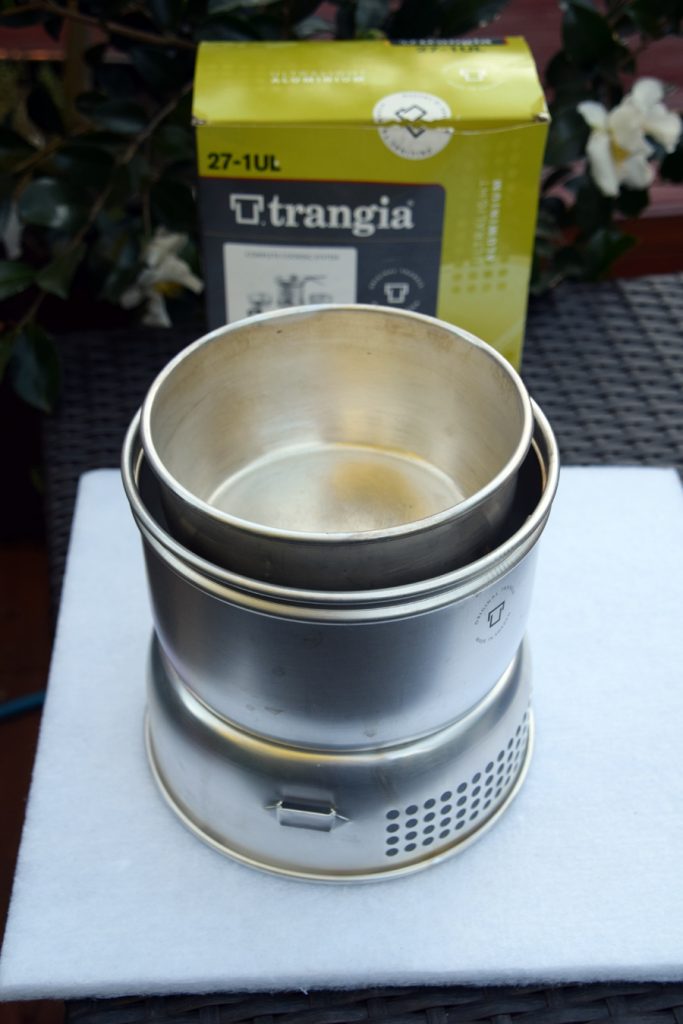
Trangia 27-1 set up ready to go
Liquid Fuel Stoves
These stoves consist of a fuel container, regulator and burner unit that is manufactured to use a wide range of fuel types. They can be fiddly to set up and need to be primed. If this is done incorrectly they can be very dangerous. The stoves are excellent when travelling widely and if you are unsure of fuel availability. They also excel as a base camp stove for larger groups and are very cost effective.
While they can be fiddly they also have the capacity to be stripped down and repaired in the field, something that other stove types don’t always cater for. In our recent survey, 9% of hikers identified as using this stove type for their hiking adventures.
Pros
- Ability to use a variety of fuels so wherever you go you are OK
- Great for longer trips with multiple people
- Very fuel efficient
- Easy to field repair
- Very versatile
Cons
- Expensive up front purchase. This is the dearest type of stove
- Need to add a pot
- Can be bulky
- Can be dangerous if not used properly, more so than the other stove types
- Is loud
Best Use
- Best used when you are staying put and not travelling around
- Great for when you aren’t sure what fuel will be available as they can be used with different fuel types
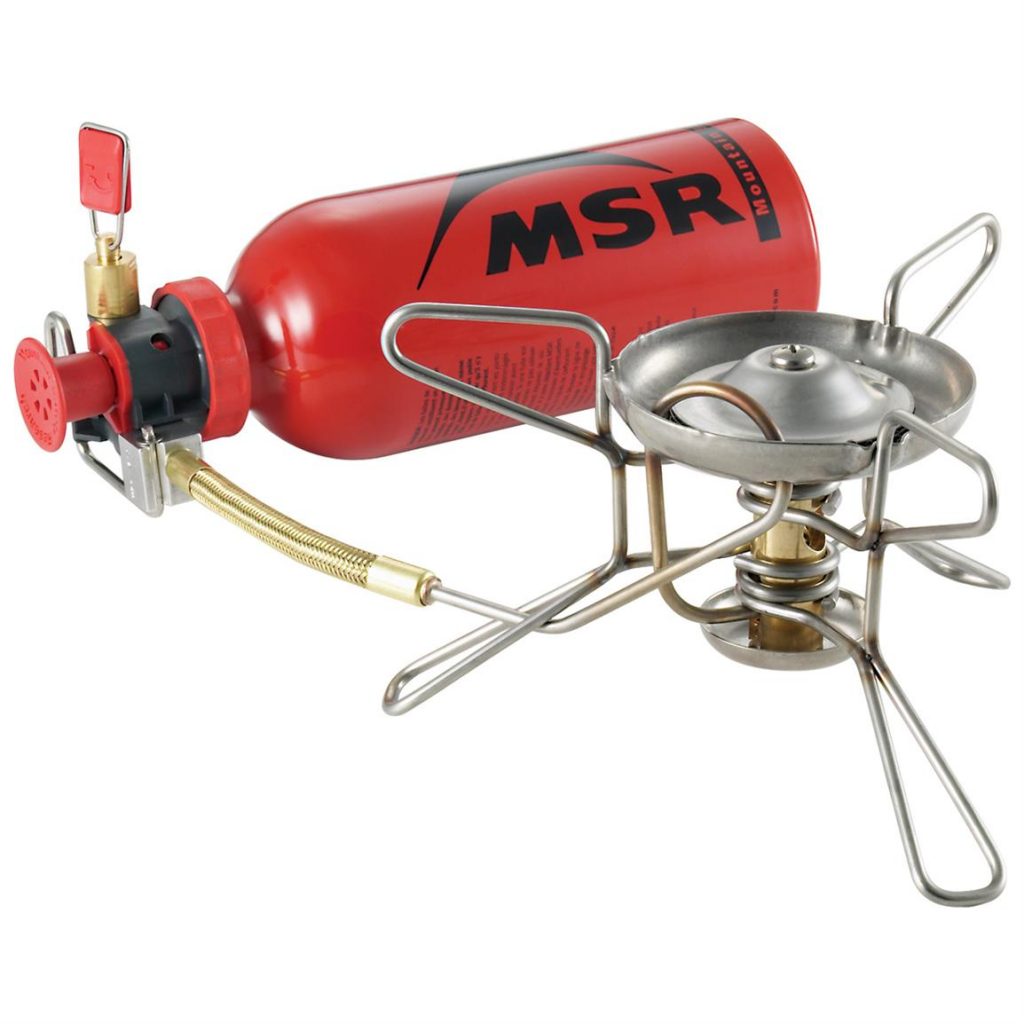
MSR Whisperlite
Hexamine Stoves
Not one of the more common hiking stoves used. Hexamine stoves use a small waxy looking block of solid fuel that is contained in a stove mechanism (a metal frame) that also provides a base to sit your pot. A good example of this type of stove is the Esbit brand. The Esbit Stainless Steel Solid Fuel Stove has been in production for many years and is about as fool proof as stoves get.
I tend to use this stove on overnight tips where I want something really light weight.
This fuel type is not susceptible to cold weather or altitude like other fuel types. This is also a very lightweight and compact unit with your pot choice going to dictate the overall size and weight of your cooking system. My current system which, which doesn’t get used that often consists of the Esbit Stainless Steel Solid Fuel Stove and the pot system from my Trangia Mini weights 187 grams plus fuel.
The examine fuel tabs are hard to source and when you can they work out to be the most expensive fuel option for cooking with. You know where your next resupply is going to be or carry enough to last you for the entire trip.
While reasonably fool proof to use ensure that you have set up your cook site on stable ground, clear away any flammable material to prevent any unwanted fires (this is less of an issue than with spirit type stoves as fuel spillage is not a big issue), and shelter from the wind otherwise these units become less efficient.
If the water is not boiled and the tablet is nearly gone just add another one. The tablets can be blown out once you have finished with them and reused next time you cook so I would recommend that you have a good quality zip lock bag to store the fuel in. In our recent survey, only 2% of hikers identified as using this stove type as their main stove for their hiking adventures.
You will need 2 zx 4 grams tablets to boil 500ml of water which will cot you about $5.00 so as mentioned previously, not cheap on fuel usage compared to other stove types.
Pros
- Very cheap to purchase the initial ‘stove’.
- The fuel tablets have an indefinite shelf life if stored correctly
- Easy to manage on the trail, almost fool proof
- Physically small and lightweight with the ‘stove’ including fuel weighing 180 grams plus your pot choice which will also dictate the size
Cons
- Mainly for heating up water for rehydrating but not so great for cooking
- Can be a health hazard in an enclosed environment however this is an issue with any stove
- The fuel smell can be off putting but is not noticeable in ventilated areas
- Is prone to wind influence so choose a unit with a built-in wind shield or pick a well sheltered area
- Leaves a residue on the pot so you need to store the pot in a bag to ensure you don’t transfer this residue to the rest of your equipment
- Slow, probably the slowest of all the types discussed here. Over 9 minutes to boil 500ml of water
- You may not be able to use this stove type in times of total fire bans so check before you go
- Expensive on fuel
Best Use
- Great for solo hikers who want a lightweight system for short trips
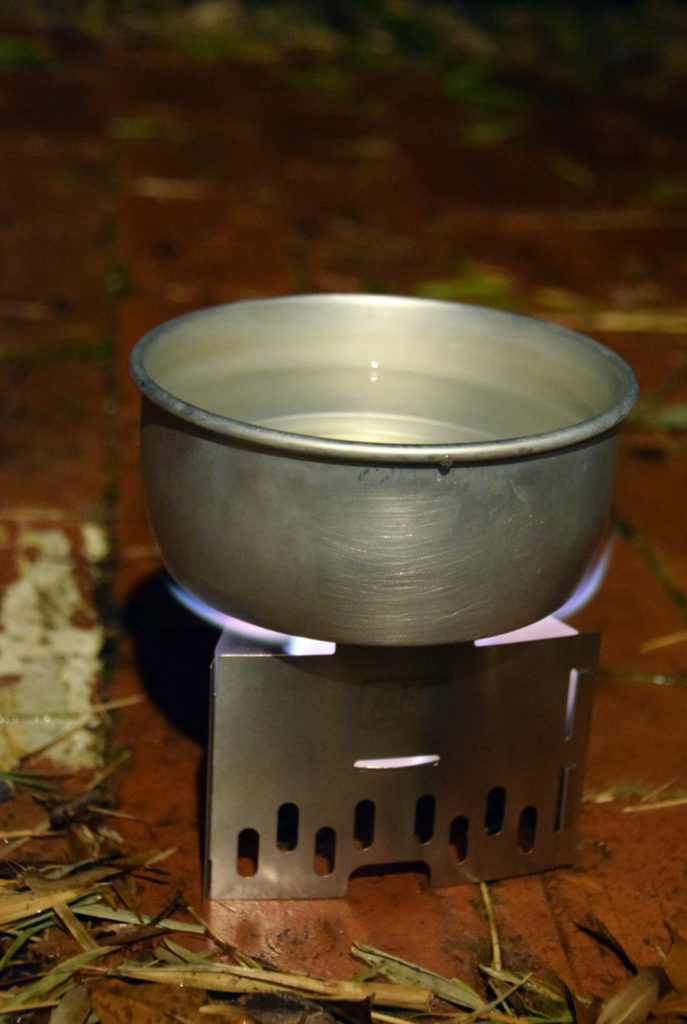
Esbit Staineless steel solid fuel stove. this model is extremely light weight
Wood Burners
This stove is essentially a miniature version of a wood barbecue that we use at home and doesn’t fit into the lightweight backpacking category weighting up to 1 kg or more. having said that you can get very lightweight versions of these stoves. They also rely on being able to find dry fuel and being legally allowed to use them, which is not always an option in Australian National Parks and nature reserves. They are great for car camping when weight is not an issue and create that atmosphere that only get with an open fire. In our recent survey, no hikers identified as using this stove type for their hiking adventures.
An example of this type of stove is the Biolite brand, which also makes a model that will charge your mobile phone
Pros
- Collect fuel as you go. Some stoves can be lightweight (relatively)
- There is a model that will allow you to charge your mobile phone
- There’s nothing like the atmosphere created by an open fire
Cons
- Expensive
- Can be heavy for back packing; up to 1 kg plus
- Not so good in wet weather when fuel is not available
- Many national parks don’t allow open fires
Best Use
- Car camping in good weather when you want some atmosphere
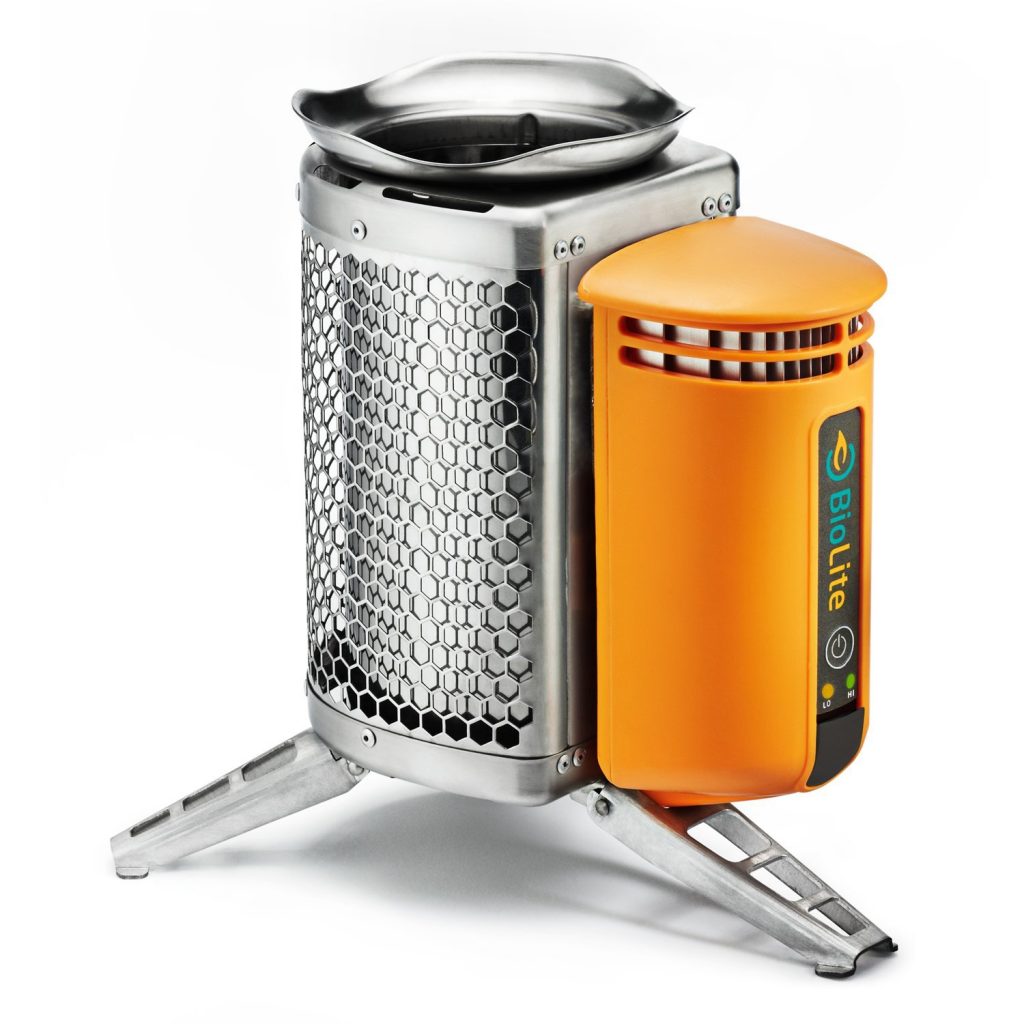
Biolite wood stove
Last Thoughts
The choice of which stove you use for hiking can be a confusing one and you will find that if you hike long enough, you will more than likely end up owning multiple stoves for use on different occasions depending on your needs. If possible, talk to other hikers who do similar trips to you as well as talk to the experts in the outdoor stores.
If you are starting out, hike with friends and see what they use and get them to each you how to use them. Ultimately what it comes down to is your style of hiking as well as your personal preferences. I still prefer my Jetboil Minimo integrated stove as my main stove, not because it’s the lightest or the cheapest but because it’s easy, quick and less fiddly than other stove types. Having said that there are still times I use my other stoves because it makes sense for the specific trip.